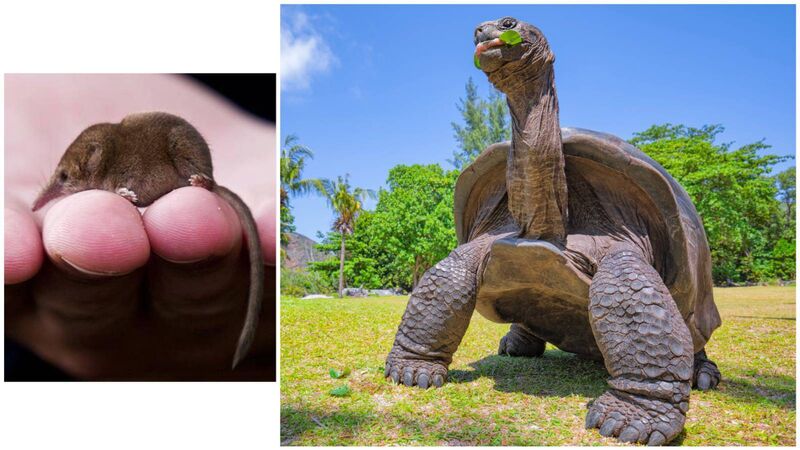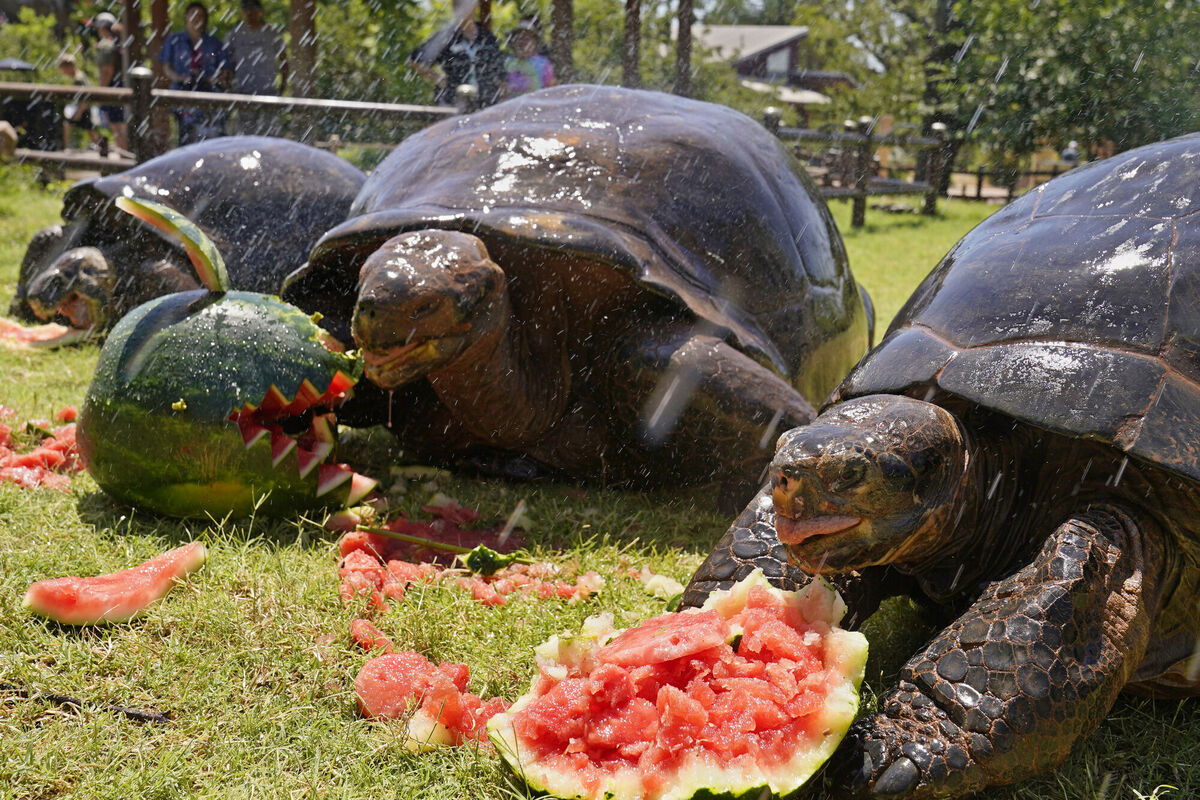Not all creatures age at the same rate — here's why

Ireland’s smallest mammal, the pygmy shrew and the Aldabra giant tortoise (Aldabrachelys gigantea) from the islands of the Aldabra Atoll in the Seychelles, is one of the largest tortoises in the world
‘For no man at all can be living forever, and we must be satisfied’, — Maurya in .
Senescence, the deterioration of our bodies with age, is unrelenting. Wild creatures too are subject to it, but some keep the grim reaper at bay more successfully than others.
Large mammals generally live longer than small ones. Some bow-head whales, born in Napoleon’s day, may still be alive in Arctic waters; 200-year-old harpoon-heads have been found embedded in their flesh. At the other extreme, Ireland’s smallest mammal, the pygmy shrew, having strutted and fretted its hour upon the stage, shuffles off this mortal coil in a year or so.
Mammals, generating their body heat internally, can’t afford to dawdle lest their temperature falls; the clock is ticking and they can’t loiter. Cold-blooded creatures can opt for a more laid-back approach; heat loss doesn’t worry them and time constraints are less of a problem. Fish amphibians and reptiles survive for long periods in captivity. The claim that an eel in a Swedish well reached the age of 120 has been disputed, but one did survive for 85 years in an aquarium and a Danish one reached 55.
The life-expectancies of amphibians and reptiles in the wild are not easy to determine. Unlike humans, wild creatures don’t die in their beds; there are no birth and death certificates. Calculating how long every species lives is not on, but a study just published reviews what is known about reptilian longevity. ‘Is senescence inevitable and universal for all living organisms’, its lead-author, Beth Reinke, asks?
She and her colleagues drew on the ‘blood sweat and tears’ of countless dedicated individuals working in the field. More than 100 scientists contributed data on 117 reptile and amphibian species. Much has been learned by tagging animals in the wild. Few tags ever come to light again, but some are ‘recovered’. From these and recaptures of marked animals, estimates of life-expectancy can be made, subject to many ifs, buts, and caveats.
The results confirm that, as with mammals, large amphibians and reptiles tend to live longer than small ones. They show that crocodiles, salamanders, and turtles are exceptionally long-lived. Three-quarters of tortoises and turtles, monitored in zoos and aquaria, exhibited ‘slow or negative senescence’. These creatures scarcely age at all during some periods of their lives. A giant tortoise in the Seychelles is thought to be 190 years old, making it the world’s oldest known vertebrate.

Comparing senescence and longevity across 77 species of reptile and amphibian, the researchers show that cold-blooded creatures have evolved lower aging rates and longer lifespans than their warm-blooded equivalents, but there is considerable variation between species.
The team identified some of the drivers of these differences. Lower metabolism does not of itself lead to increases in life expectancy, nor do cold-blooded creatures necessarily have lower metabolism than similarly-sized warm-blooded ones. Wearing body-armour, such as protective shells scales or spikes, increases longevity by helping its owner avoid being eaten.
According to Reinke, being able to survive for long periods exerts evolutionary pressure to age more slowly.







